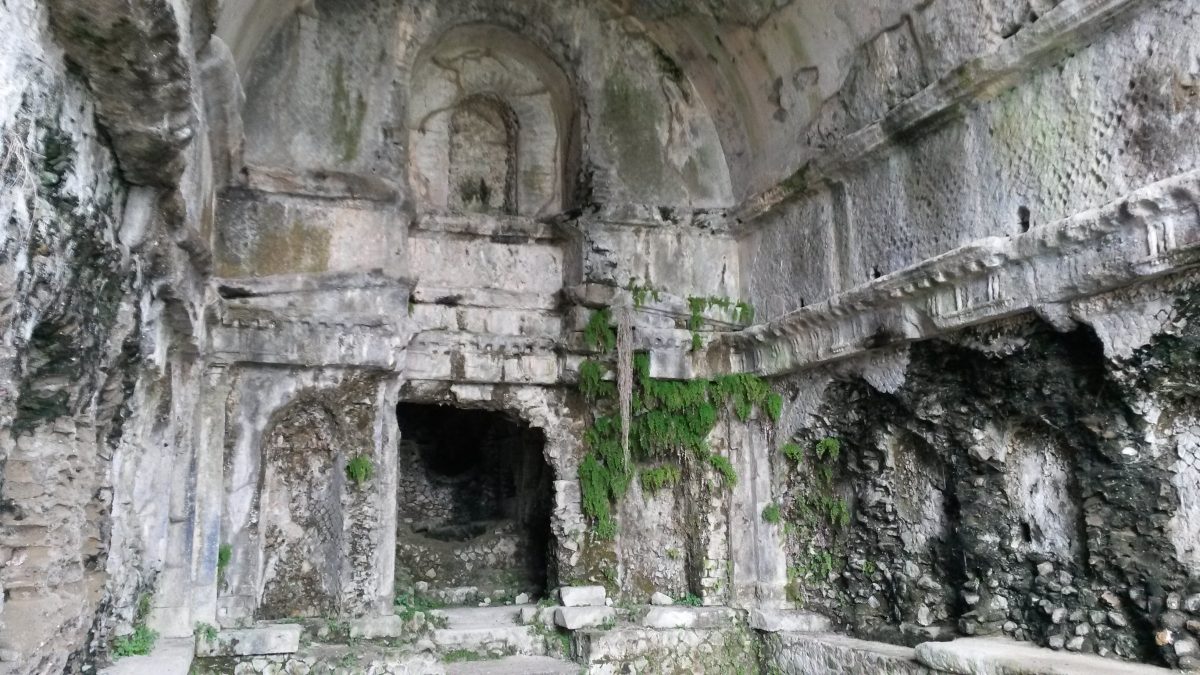TEMPORARILY CLOSED.
It was originally incorporated in the Villa of Domitian, but today is isolated from the other monuments belonging to the large imperial residence surrounding the lake.Entrenched inside the lake’s crater, it faces the sacred Monte Cavo, once mons Albanus, the political and religious centre of the Latin League. The Ninfeo Dorico (Doric Nymphaeum) was discovered at the beginning of the 18th century and according to experts did not belong to the Domitian period but was instead one of the sacrariums built in honour of the ancient goddesses of Albalonga described by Cicerone.It was 11 x 6 m in size with the barrel vault ceiling reaching a maximum of 8 metres in height. The nymphaeum inside is covered in opus reticolatum.The variety of decorative styles ranges from the Doric cornice to the capitals and the consoles of the pilasters in typical Ionic order. A series of niches along the sides of the nymphaeum, including the two on the far wall beneath a broken pediment, lead us to believe they contained statues. Beneath the tympanum was the driving force that powered the amazing water works. These were obtained by large and small waterfalls, channels and spillways, which were fed with water from one of the many aqueducts running through the Albano crater and several cisterns and hydraulic ducts installed behind the central back wall. In Medieval times, the area opposite the Nymphaeum was probably fortified, but little archaeological evidence remains to explain this particular phase.


 Visit Castelli Romani
Visit Castelli Romani 

